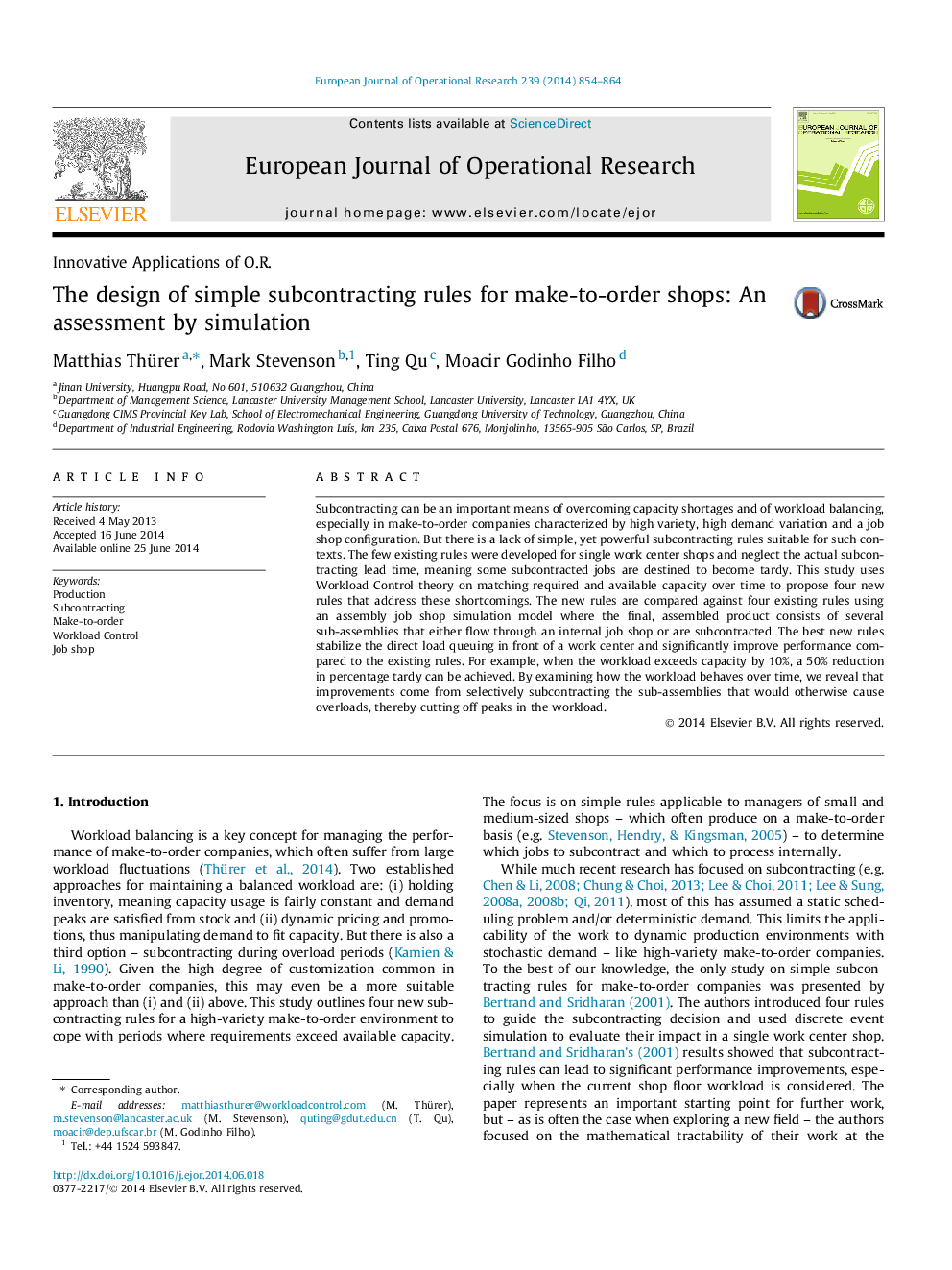| Article ID | Journal | Published Year | Pages | File Type |
|---|---|---|---|---|
| 476627 | European Journal of Operational Research | 2014 | 11 Pages |
•Evaluates subcontracting rule performance in an assembly job shop by simulation.•Existing rules are refined to improve their applicability to multi-station shops.•The design of new rules is based on Workload Control theory.•The new rules smooth the direct load queuing in front of a work center.•This allows performance to be significantly improved compared to existing rules.
Subcontracting can be an important means of overcoming capacity shortages and of workload balancing, especially in make-to-order companies characterized by high variety, high demand variation and a job shop configuration. But there is a lack of simple, yet powerful subcontracting rules suitable for such contexts. The few existing rules were developed for single work center shops and neglect the actual subcontracting lead time, meaning some subcontracted jobs are destined to become tardy. This study uses Workload Control theory on matching required and available capacity over time to propose four new rules that address these shortcomings. The new rules are compared against four existing rules using an assembly job shop simulation model where the final, assembled product consists of several sub-assemblies that either flow through an internal job shop or are subcontracted. The best new rules stabilize the direct load queuing in front of a work center and significantly improve performance compared to the existing rules. For example, when the workload exceeds capacity by 10%, a 50% reduction in percentage tardy can be achieved. By examining how the workload behaves over time, we reveal that improvements come from selectively subcontracting the sub-assemblies that would otherwise cause overloads, thereby cutting off peaks in the workload.
